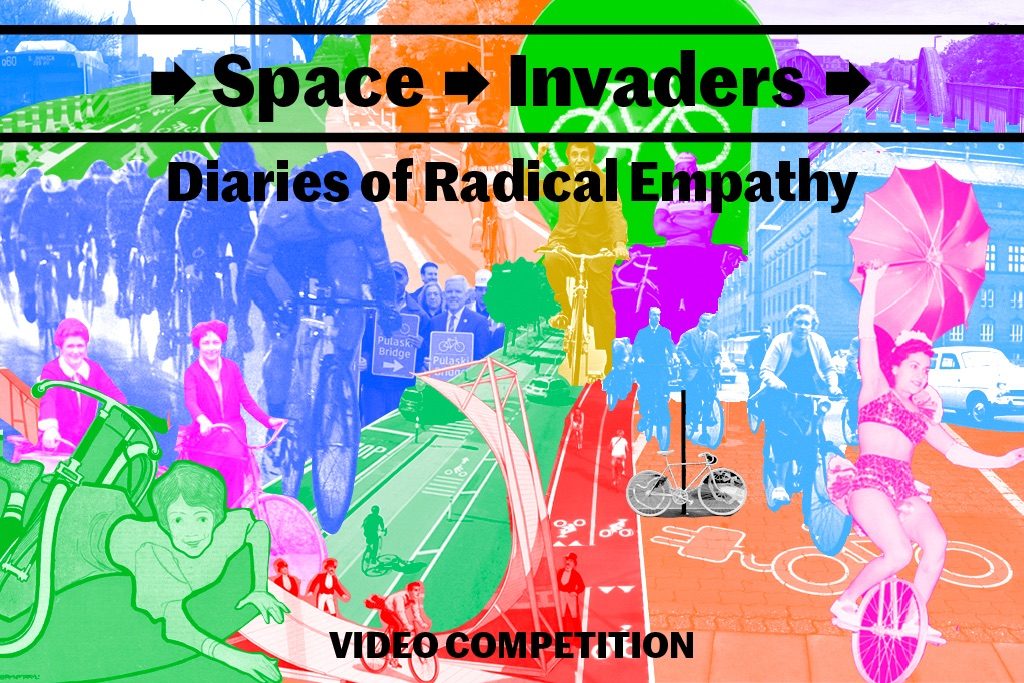
We are celebrating 15 years — and counting — of stories that are deeply researched and deeply felt, that build a historical record of what the city has been.
We are celebrating 15 years — and counting — of stories that are deeply researched and deeply felt, that build a historical record of what the city has been.

Graphic by Manuel Miranda Practice (MMP)
The Hudson River bike path is flooded with runners; a lane of midtown traffic is blocked by vendors pushing food carts; rideshare cars idle in every crosswalk, waiting for a hire. Cyclists roll through blinking “don’t walk” signs, leaving frightened throngs of people in their wake; longboarders sail up the middle lane of open avenues at midnight. Even rats lay claim to their share of the transportation network, crowding the subway platform as passengers wait for overnight trains. What we share in New York City is opportunism. We are keen to extend our lines of action deep into one another’s territories, enjoying those places where we’re inconvenient, unwanted, and dangerous.
Simultaneous uses coexist, confound, and conflict. Each circulator tries to delegitimize the other by getting in the way, amounting to an all-out war. As more and more people seek alternate forms of travel, there is a need for empathy in how we move through the city. Far from creating enmity, a multiplicity of flows can encourage greater sensitivity. Walkers, runners, skateboarders, pedicabbers, bikers, limousine, bus, and truck drivers, drone operators, kayakers, and swimmers can find ways to share the city, while feeling that their space is free and respected.
What contradictions of coexistence can we reveal in order to transform territorial aggression into a collective right-of-way?
Call for Entries
Space Invaders: Diaries of Radical Empathy invites all city circulators and mavens of transportation to compose and submit a two-minute video of radical empathy. Envision the city from a mode of travel you never take, or can’t stand to try. Or try to get from one place to another in the most unexpected or impossible way — swim to work, bike to the airport, kayak to dinner, climb a mountain to the post office. We encourage you to find an experience of the city, from a point of view you’ve so far never given yourself a moment to know, or even knew existed.
An interdisciplinary jury will select three winners — one first prize, and two runners-up. Winners will be highlighted on Urban Omnibus alongside City of Cycling, an on-going series examining the current condition of cycling in New York City and its implications for altering urban space. The first place winner will additionally receive a $1000 cash prize, and two runners-up will receive $250 each.
Jury
Alexander Levi and Amanda Schachter, co-principals of SLO Architecture, and Mariana Mogilevich, Editor in Chief of Urban Omnibus, will be joined by Judd Ehrlich, Danielle Jackson, Hatuey Ramos-Fermín, and Dr. Michael Smart.
The deadline for submissions is November 4, 2016. Winners will be announced November 16, 2016.
Submission Requirements, Terms & Conditions
Read more in City of Cycling: Speed
NYC: Fast — SLO talks to David Trimble, founder of the Red Hook Criterium, about bike racing as urban spectacle.
NYC: Slow — Ryan Russo, Deputy Commissioner of the New York City Department of Transportation, sits down with SLO to discuss Vision Zero, the city’s campaign to reduce accidents and traffic fatalities, and its impact on cycling.
Building Speed — In Germany’s Ruhr Valley, a project is underway to interconnect ten cities with the country’s first bike superhighway, the Radschnellweg (RS1). Public officials from the area explain how the idea became reality and share their hopes for its future.
Planning the Radschnellweg — Martin Tonnes, Chief Urban Planner for the Radschnellweg project, talks to Michael Smart, professor of planning and scholar of transportation within marginalized communities, about the nuts and bolts of a bike superhighway — and whether such a thing would ever be possible in NYC.
The views expressed here are those of the authors only and do not reflect the position of The Architectural League of New York.